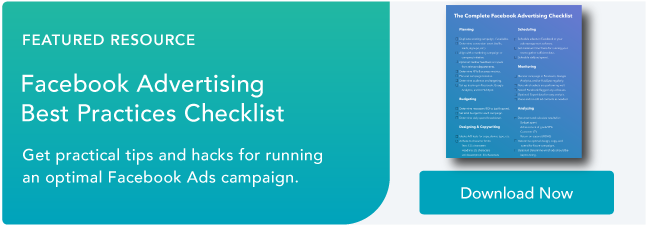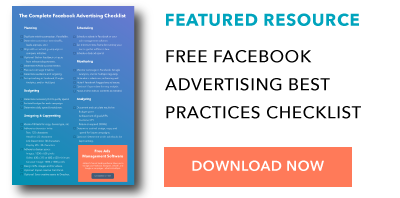Platforms are embedded in our daily lives — whether we realize it or not.
Have you recently … Ordered food from a service like GrubHub or made a reservation using OpenTable? Booked a ride using Lyft? Used your phone to check your email? All of these seamless interactions require systems to talk to each other via open platforms.
What about at work? How many tools do you use to do your job? Do you spend a lot of time updating disparate systems, or do you use a connected stack of technologies to keep things up-to-date? If it’s the latter, you have a platform to thank for your saved time.
A platform makes it possible to connect tools, teams, data, and processes under one digital roof. It’s the nucleus of all systems and allows you to connect all your favorite tools seamlessly using integrations. An integration allows disparate systems to talk to each other. By joining tools via integrations, a change made in System A automatically carries through to System B.
Leveraging platforms and integrations hasn’t always been commonplace. A couple of years ago, HubSpot Research found that 82% of salespeople and marketers lost up to an hour per day managing siloed tools — a costly mistake.
Today, employees recognize that integrating technologies to do their jobs isn’t an option but a requirement. Individual employees are opting to connect their tools and, on average, leverage eight apps to do their job.
Employees and businesses alike run on connected applications. Okta found that it’s small-mid sized customers (defined as companies with less than 2,000 employees) average 73 apps — up 38% from last year. While larger customers (companies with over 2,000 employees) leverage closer to 130 apps — up 68% from the past year.
From personal life to work, platforms have become a staple in our day-to-day. These platforms are well-oiled machines that initiate seamless connections between technologies. Today, the consumer not only anticipates but also expects their systems to connect — raising the bar for companies to make it possible.
But more tools shouldn’t mean more friction. At HubSpot, we want to help our customers connect their tools on our platform to reduce friction and grow better. Customers should have tools and solutions to solve their needs, regardless of if HubSpot built them. Connecting tools allows for uniform data, processes, and experiences. This year, we’re experimenting with ways to expose integrations to our customers to increase adoption.
However, as a platform scales, it becomes increasingly tricky for customers to navigate exhaustive lists of integrations and identify what's relevant to them. We recognized this at HubSpot and began experimenting with paid ads to see if this could be a valuable distribution channel to our customers.
Our Experiment on Paid Integration Ads
At the end of Q4, the Platform Marketing team decided to use some leftover budget to try a channel we hadn’t yet proven viable for integration adoption — paid ads.
We hypothesized that we could influence the adoption of an integration through paid ads. To test our hypothesis, we ran a retargeting campaign for three integrations on Facebook. The ads were surfaced to HubSpot’s retargetable audience.
These ads featured three HubSpot-built integrations: Slack, Wordpress, and Eventbrite. We selected these integrations because they are natively built (built by HubSpot) and structured in a way that allowed us to measure multi-touch attribution.
By leveraging Google Tag Manager on the in-app integration directory, custom UTM parameters, and funnel reports, we were able to measure all steps from viewing the ad to installing the integration. Before launching the campaign, we tested our Google Analytics custom funnel reports by completing all actions — including installing the integrations to make sure they worked as designed.
Before running the campaign, we made the conscious decision to split our budget evenly across all three integration ads — regardless if one ad outperformed the others. We did this to minimize variables for the experiment.
Because we ran ads through November and December, we decreased spending from $130 dollars a day to $5 a day on and around holidays. We did this to “pause” the campaign on days where the ads would get lost in the noise, as this data could skew overall results.
Lastly, we determined our success metrics. Because we didn’t have apples-to-apples benchmark data for integration paid ads, we worked with our paid team to establish reasonably similar benchmark data. While it wasn’t a direct comparison, we were curious to see how ads could influence multi-step actions. We evaluated our performance based on click-through rates (CTR), cost per click (CPC), and cost per acquisition.
Experiment Results
The integration ads surpassed our benchmark data for click-through rate (CTR), cost per click (CPC), and cost per acquisition at the 7-, 30-, and 44-day marks — supporting our initial hypothesis and prediction.
The 30-day CTR for our integration ads was higher than the 7-day and 30-day CTR for the benchmark data, which is surprising as we expected the audience to become more fatigued over time.
Fatigue can be measured by the frequency a user views the same ad. For example, at HubSpot, we look at if a viewer has seen the same ad over 2.5 times within 30 days, which we consider high. Additionally, we kept an eye out for an increasing cost per acquisition.
Paid ads for these integrations was attractive to our retargetable audience and a legitimate acquisition point for HubSpot. It helped us influence adoption of integrations --- resulting in hundreds of installs in the featured technologies. It also provided us with a data point we’ve been curious to see — the cost of an install.
When considering the value and acquisition cost of an install, it’s helpful to understand the impact on the business. At HubSpot, our customers with integrated stacks of technologies tend to be more successful — and they stick around.
This makes sense — as the more apps installed, the higher the likelihood someone will stick around. This is a common finding among platform companies.
On a recent trip to San Francisco HubSpot’s VP of Platform Ecosystem Scott Brinker found that “a common pattern on platforms is that the more apps a customer integrates into their system, the higher their retention rate will be — for both the platform and the apps integrated into it.”
Connecting their tools allows customers to access all their data in one core system while staying flexible and adaptable to their needs as they grow.
Since HubSpot doesn’t currently charge integrators to be part of our ecosystem, spending money to drive a net new install may seem counterintuitive. When weighing the long-term benefits of an install for customer value and retention, we are able to determine what is a reasonable cost per install. The experiment cost was worth the insight, as it allowed us to gain a baseline understanding of the cost per acquisition of an integration install.
Ultimately you can determine if the long-term value outweighs the upfront cost. (While directional value is a good baseline, you’d ideally look to lifetime value [LTV] to establish actual value.)
What This Means for HubSpot — and For You
Our experiment with paid ads outperformed our expectations and helped us reach a larger audience than we anticipated. It became clear that this was and is a viable channel for us to increase adoption of integrations and better understand the cost per integration install.
Future looking, we could alter who we target to see how it impacts CTR. We could leverage enrichment software like Datanyze or Clearbit to see if users have tools and cross-reference install data to create a list of folks using tools we integrate with but have yet to connect to. Alternatively, we could leverage this data to target a group of users going through onboarding to encourage them to connect existing tools to HubSpot.
Additionally, we could look through the required steps to connect an integration and consider how we could reduce them to simplify the process for our users and potentially increase our CTR.
Not a platform company? No problem. This retargeting campaigns can be leveraged to evaluate other valuable actions for your users, such as sign-ups, free trials, or event registration.



No comments:
Post a Comment